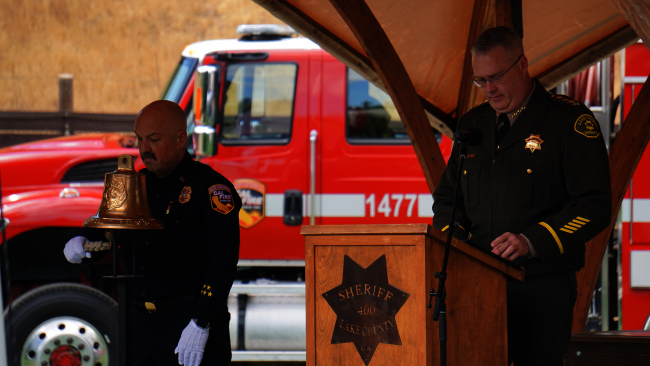
LAKE COUNTY, Calif. — Community members and leaders gathered on Friday to remember one of the worst fires in California — and Lake County — history.
The 10-year commemoration of the Valley Fire began with a minute of silence and the replay of the original Sept. 12, 2015, radio dispatch tones at 1:20 p.m. on the open lawn of Mandala Springs Wellness Retreat Center in Cobb — nearly the same time the fire ignited a decade earlier.
Bright red fire engines and large white tents stood out against the clear blue sky and the green of late-summer grass.
During the 48 minute ceremony, state and local leaders spoke as first responders, volunteers and community members gathered to remember the lost lives and honor the resilience that the disaster has inspired.
“The walls around us all came down, and we came together to focus on recovery and rebuilding,” District 5 Supervisor Jessica Pyska said, recalling the community actions in the aftermath. “Government agencies worked side by side with the utilities, with the tribes, with nonprofits, faith based organizations, volunteers and just regular people like a lot of you here — the biggest lesson that we learned is that no one can do this work alone.”
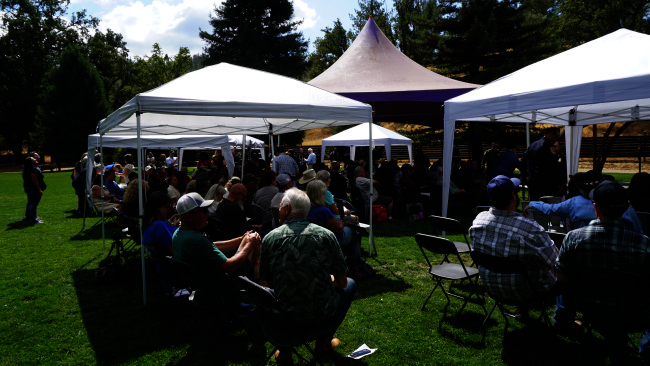
The Valley Fire, which burned 76,067 acres, destroyed 1,955 structures, severely injured four firefighters and took five lives, was the third most destructive wildfire in modern California history at the time.
Sheriff Luke Bingham began his speech reading out the names of the lost lives, with a bell rung to remember them.
They are:
• Bruce Beven Burns, 65, Hidden Valley Lake;
• Robert Taylor Fletcher, 66, Cobb Mountain;
• Robert Litchman, 62, Seigler Springs;
• Barbara McWilliams, 72, Anderson Springs;
• Leonard Neft, 69, Anderson Springs.
“Resilience was on full display,” Bingham said of how the community came together and supported each other, before moving on to address improved response to emergency.
While stressing that the response in Valley Fire was “nothing short of extraordinary,” Bingham acknowledged that, “Tragic events such as the Valley Fire also drive improvement.”
“There’s always gaps in our knowledge,” he said, adding that the Lake County Sheriff’s Office and the Office of Emergency Services have spent years evaluating responses to incidents.
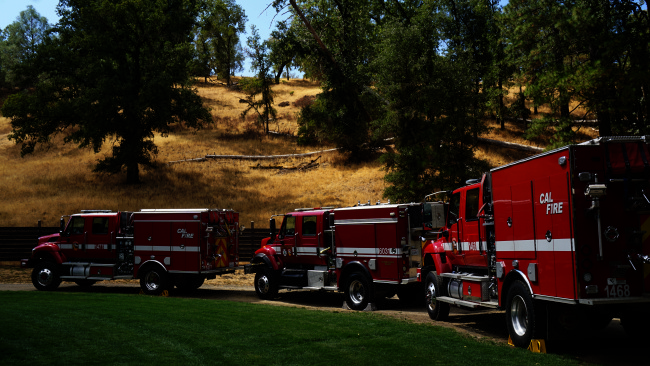
“Because of that process, we have changed how we respond to fires, how we communicate and how we notify our community, and we will continue to evolve,” Bingham said. “We are better prepared today than we have ever been.”
Cal Fire Chief Paul Duncan recalled his role as a firefighter protecting structures in Cobb.
“My resources were two engines, one water tender,” he said, describing how he and a handful of firefighters held the line along the nature trail near Cobb School, preventing the fire from reaching the school and downtown Cobb.
“I'm grateful to those firefighters, grateful to this community, and grateful I was able to welcome students back to Cobb school when it was reopened,” he said.
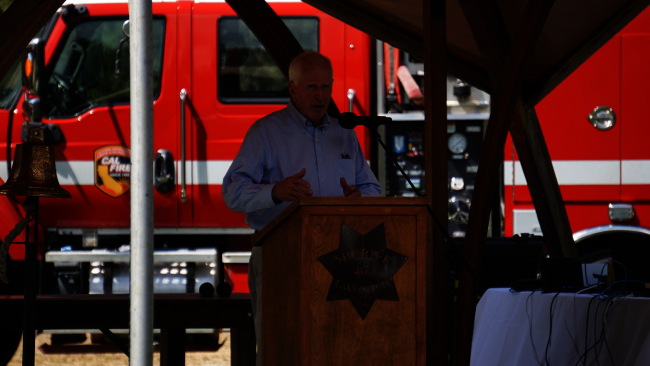
Cal Fire Director Joe Tyler talked about state resources.
“Cal Fire has continued to bolster its resources, both in personnel, in aviation assets and fire engines,” he said. “The governor has invested over $2.8 billion in resilience since the Valley Fire in 2015 and I am grateful to be able to
serve and support all of you to be able to make a difference in your community.”
Congressman Mike Thompson recalled making his way to Lake County from the East Coast in the days after the fire began, stressing the importance for someone to “see with their own eyes what's happening on the ground; to be able to go back to Washington and get the resources that we need.”
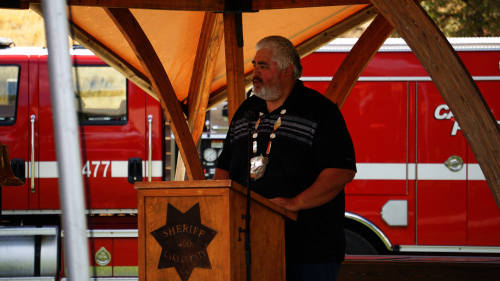
“I think we're able to get over $100 million for these events,” he said. “And it's equally as important to make sure funding continues to flow to do the resiliency work, so we don't have to deal with situations such as this.”
Middletown Rancheria Chairman Moke Simon also spoke on the community's resilience: “I saw the barriers drop, as Jessica said, I saw us come together and do things that were amazing, and continue to do those things that are amazing.”
Cathy McCarthy and Cindy Leonard of the Cobb Area Council shared the community response and recovery, which was followed by Eliot Hurwitz of Seigler Springs Community Redevelopment Association who spoke on growth of non-profits.
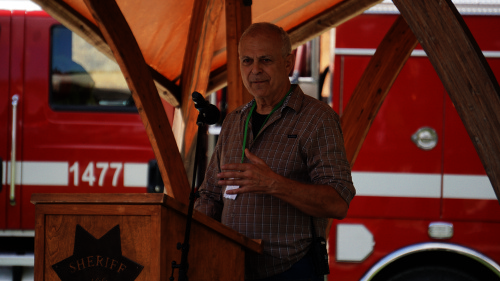
Hurwitz said after the fire, local groups — including more than three dozen nonprofits, churches and social service organizations — played a key role in sustaining the community.
At the end of the ceremony, Pyska along with Board of Supervisors Chair Eddie Crandell presented a bronze plaque to Simon honoring Middletown Rancheria — which has opened their doors to shelter evacuees and provide help — for their “steadfast support, collaboration and community service in times of disasters.”
Pyska also presented another bronze plaque to be placed at the Cobb Area Council in memory of the Valley Fire and lost lives. An identical plaque will be presented by Supervisor Helen Owen to the Middletown community during their Saturday commemoration event.
The names of those who died in the Valley Fire were carved on the plaques to Cobb and Middletown communities.
Email staff reporter Lingzi Chen at
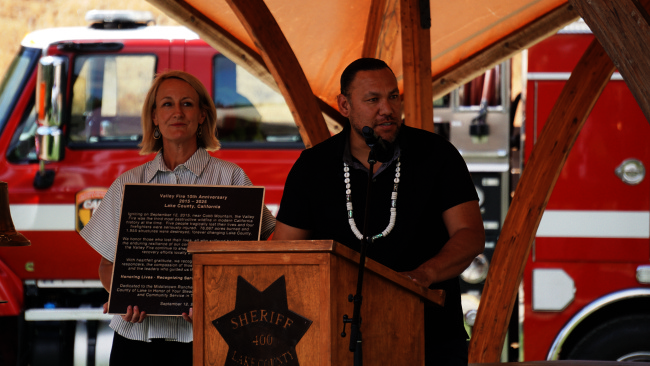
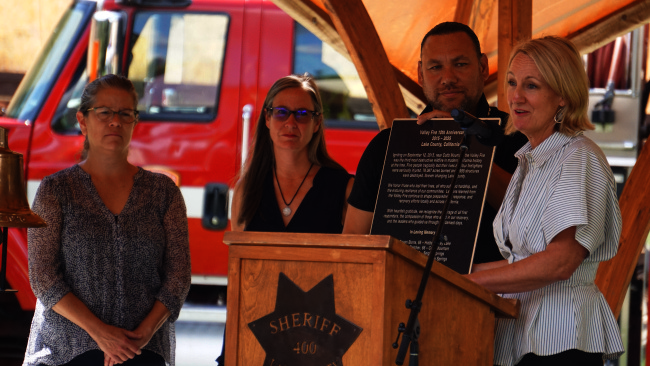

 How to resolve AdBlock issue?
How to resolve AdBlock issue? 



